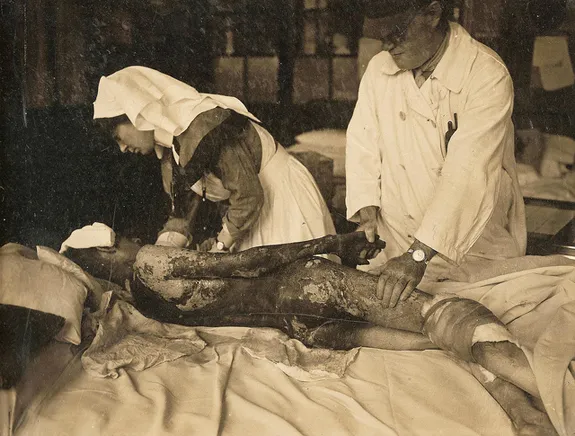If Syria Uses Chemical Weapons, Here’s How They’ll Work
Amidst the turmoil of an ongoing civil war, Syrian President al-Assad has been threatening to use chemical weapons if faced with international intervention
/https://tf-cmsv2-smithsonianmag-media.s3.amazonaws.com/filer/2012072610500507_26_2012_syria-chemical-weapon.jpg)
An ongoing clash between the Syrian government, lead by President Bashar al-Assad, and a multifaceted uprising, has escalated into what the Red Cross is calling a full-on civil war.
Amidst the turmoil, President al-Assad has been threatening to use chemical weapons if faced with international intervention. According to the Guardian,
Syria’s decision to reveal the long-suspected existence of its chemical weapons suggests a desperate regime deeply shaken by an increasingly bold rebellion that has scored a string of successes in the past week.
Wired’s DangerRoom says that if the Syrian regime decides to use these weapons of mass destruction, the US, or anyone else, likely wouldn’t be able to stop them.
Globalsecurity.org estimates Syria possesses “hundreds of liters” of Sarin, mustard gas and VX. The Pentagon estimates that 75,000 troops would be required to secure the chemical stockpiles, a force nearly the size of the one the U.S. fields in Afghanistan.
So if the unthinkable were to happen, and Sarin, VX, or mustard gas were turned on the Syrian opposition or anyone else, what would be the result? How do these chemical warfare agents work?
Mustard Gas

Mustard gas, otherwise known as Sulfur mustard or more technically 1,1-thiobis(2-chloroethane), was a chemical weapon first used during the trench warfare of World War 1.
According to the US Center for Disease Control and Prevention (CDC), mustard gas is not usually fatal, but a severe dosage causes skin to blister, blindness, fever, vomiting, and lung damage.
VX
Designed by the United Kingdom in the 1950s, VX is an odorless, tasteless, oily liquid that can be spread through the air, water, or food. The CDC says VX is “the most potent of all nerve agents,” causing confusion, convulsions, paralysis, and in some cases death. Joe Lenthall with the University of Oxford says,
operates by cutting off the nervous system. It binds to the enzyme that transmits signals to the nerves and inhibits them. Therefore the nerves become isolated and uncontrollable.
Sarin
Designed in Germany in 1938, Sarin, like VX, is a nerve agent. Similar to VX, Oxford University describes Sarin as, “a colourless, odourless gas with a lethal dose of just 0.5mg for an adult human (or 0.01mg/kg of body weight).” Sarin, which also goes by the name GB, can be spread easily through drinking water, can be spread as a gaseous vapor, or used to contaminate food. The CDC says that symptoms can arise within seconds, and can include, like VX, convulsions, loss of consciousness, paralysis, and death.
Though all three chemical weapons can be treated if antidotes or procedures are applied almost immediately, obviously the best case scenario is for these or other similar weapons to never be used.
More from Smithsonian.com:
/https://tf-cmsv2-smithsonianmag-media.s3.amazonaws.com/accounts/headshot/smartnews-colin-schultz-240.jpg)
/https://tf-cmsv2-smithsonianmag-media.s3.amazonaws.com/accounts/headshot/smartnews-colin-schultz-240.jpg)